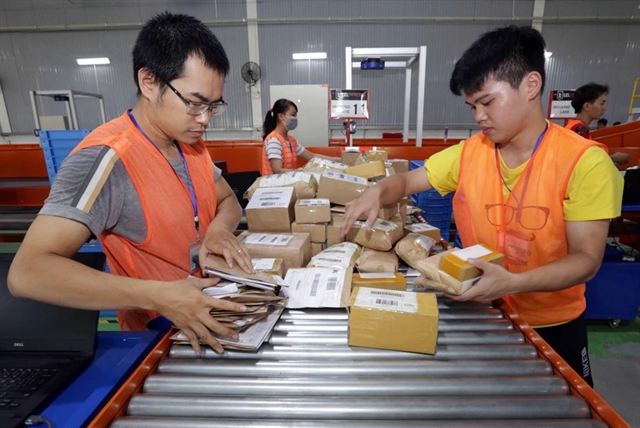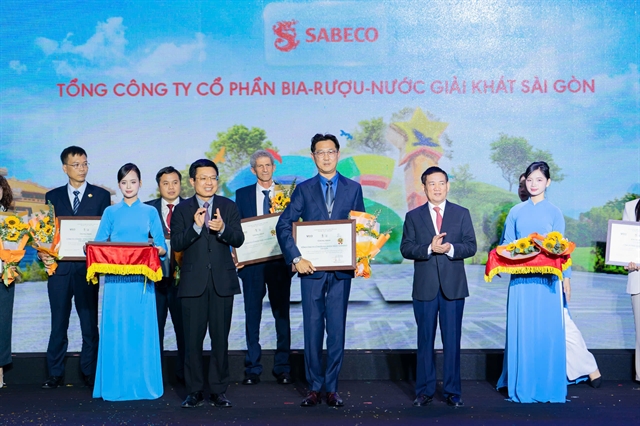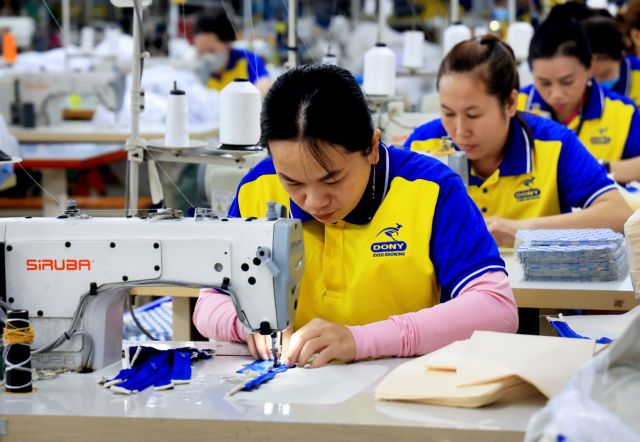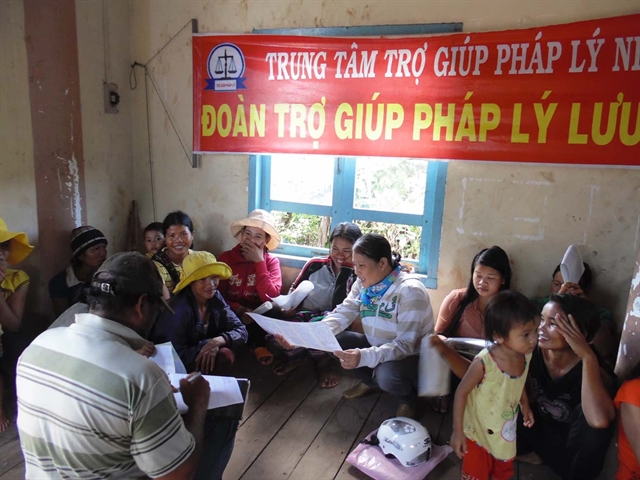 Economy
Economy

 |
| Workers at Dony Garment Company in HCM City's Bình Chánh District. — VNA/VNS Photo |
Compiled by Hải Anh
HÀ NỘI — Việt Nam has set an ambitious target of earning $48 billion in export revenue for the textile and garment industry this year, according to the Việt Nam Textile and Apparel Association (VITAS) -- and industry insiders hope that sustainable fashion will help the sector achieve its goal.
The industry is one of Việt Nam’s key sectors, providing employment for about three million workers.
Despite being heavily affected by the global economic downturn the previous year, textile and garment exports still reached US$44 billion.
This year's ambitious goal is particularly challenging given the increasing importance of sustainability and social responsibility in international markets. For instance, in Northern Europe, including Sweden, Denmark, Norway and Finland, consumers consistently prioritise environmentally friendly and socially responsible products.
Sustainable textile and garment products, made from organic or recycled materials and manufactured under strict environmental and labour protection standards, have increasingly dominated this market.
Chairman of VITAS Vũ Đức Giang said that ‘greening’ production in the textile and garment industry can help businesses meet the requirements of European importers while promoting sustainable development.
This is no longer just a future-oriented strategy. Vietnamese textile enterprises have been aware of these demands, and have been gradually adapting to meet them, for years.
Tapping into strengths
Nguyễn Thị Hoàng Thúy, Trade Counsellor at the Việt Nam Trade Office in Sweden and Northern Europe, said that entering the sustainable fashion market requires making high-quality products and adhering to new sustainability standards.
This is reinforced by the EU’s new Strategy for Sustainable and Circular Textiles, announced in March 2022, to minimise the environmental impact of the textile industry, improve resource efficiency and promote product circularity.
The strategy’s key objectives include reducing waste and environmental pollution from the textile sector, such as microplastic waste and harmful chemicals. It also aims to increase the use of sustainable materials, including recycled or organic raw materials, and encourage the production of durable and reusable products.
Sustainable production and consumption will also help promote a circular economy. The strategy focuses on implementing strict regulations on textile products sold in the EU market, including durability, recyclability and eco-friendly production processes.
Thúy said that as one of the world’s leading textile exporters, Việt Nam is well positioned to tap into this niche market.
"We have many advantages to leverage in this market, including abundant natural raw materials. Việt Nam possesses a rich supply of organic materials such as organic cotton, bamboo, rattan and natural silk, highly favoured by Nordic consumers. These materials are biodegradable, free from harmful chemicals and align with the EU’s environmental protection strategy," she explained.
Additionally, Việt Nam’s traditional craftsmanship meets sustainability and cultural heritage demands. The country’s silk weaving, hand embroidery and traditional garment production techniques enable the creation of unique and sustainable fashion products. These items are not only environmentally friendly but also carry cultural value, attracting Nordic consumers who seek authenticity and exclusivity.
Shifting models
 |
| A guest visits the 2024 International Textile & Garment Industry Exhibition in Hà Nội. — VNA/VNS Photo |
Despite the opportunities, complying with the EU’s stringent sustainability standards remains a significant challenge for businesses. It requires the use of eco-friendly raw materials and strict control over production processes to minimise pollution and ensure high recyclability.
Meeting EU standards also necessitates investment in cleaner production technologies and more efficient waste management systems. At the same time, obtaining international certifications, including the Global Organic Textile Standard (GOTS) or Fair Trade stamp, imposes an initial financial burden on enterprises.
Thúy said that Vietnamese businesses must adapt quickly to benefit from the EU’s sustainable textile strategy. They can collaborate with international organisations to obtain sustainability certifications, thereby gaining a competitive edge in the market.
"Businesses should invest in recycled material production technologies or develop highly reusable products. Optimising production processes to reduce waste is also a crucial factor," she recommended.
A prime example of sustainable innovation is Century Synthetic Fiber Corporation, which uses recycled materials, particularly fibres made from recycled PET (Polyethylene Terephthalate) plastic.
Việt Nam can also increase the number of green factories by promoting policies that encourage businesses to invest in eco-friendly production while providing financial support to ease the cost burden. Adopting energy-efficient technologies including LED lighting, solar panels and improved wastewater treatment systems will help lower operational costs and mitigate environmental impacts.
Phong Phú Textile Garment Corporation is a standout example of a company implementing advanced green production technologies. The company has introduced waterless dyeing techniques and installed solar energy systems in several of its factories.
The trade counsellor pointed out that Vietnamese businesses should focus on enhancing product value through creative designs that align with the growing trend of sustainable fashion. They can combine traditional materials, like silk, with modern designs and advanced techniques to create high-end and sustainable fashion products.
E-commerce is also a key channel through which businesses can access the Nordic market. Thúy stated that using online retail platforms, including Zalando and ASOS, is an effective strategy to introduce Vietnamese products. Nordic consumers are particularly interested in the origin and story behind a product. Therefore, businesses should build their brand identity by showcasing eco-friendly production processes and integrating Vietnamese culture and traditional craftsmanship into their storytelling.
Meanwhile, Director of the Institute of Industrial Strategy and Policy Research Nguyễn Văn Hội said that the Government must work alongside businesses.
"Government agencies need to negotiate and engage with international partners to establish relevant criteria, standards or regulations that help guide businesses toward closer integration with global markets," he said.
Hội shared that the authorities play a crucial role in providing essential information and support to help enterprises align with green production standards and successfully adapt to the evolving global trade landscape. — VNS




